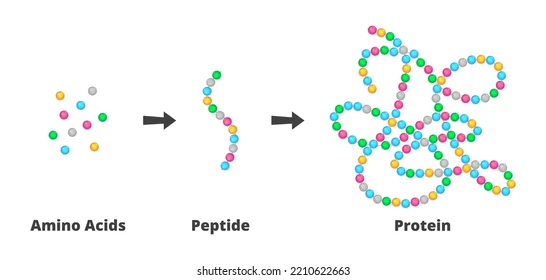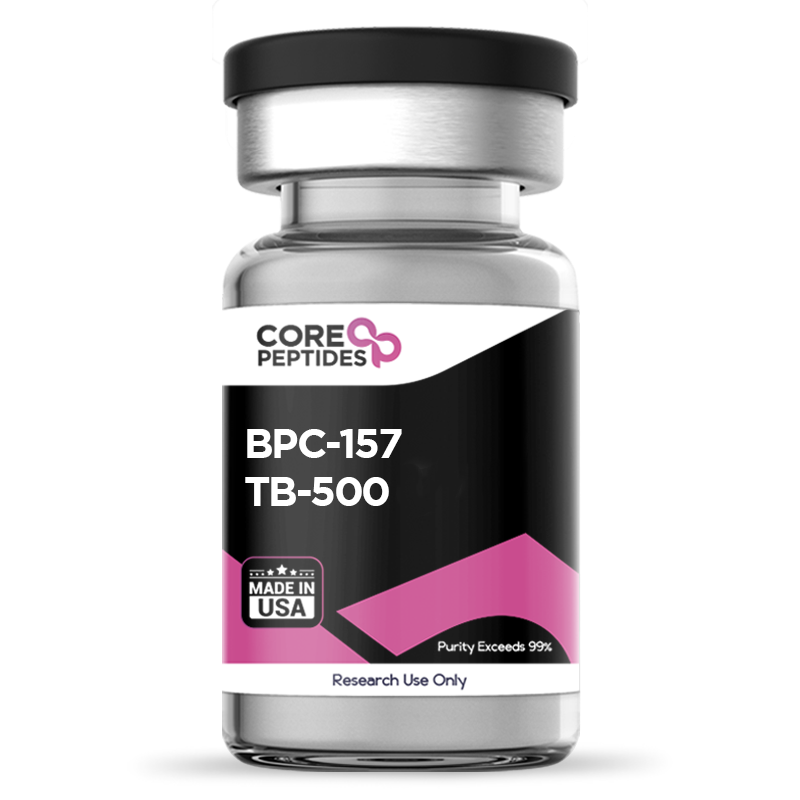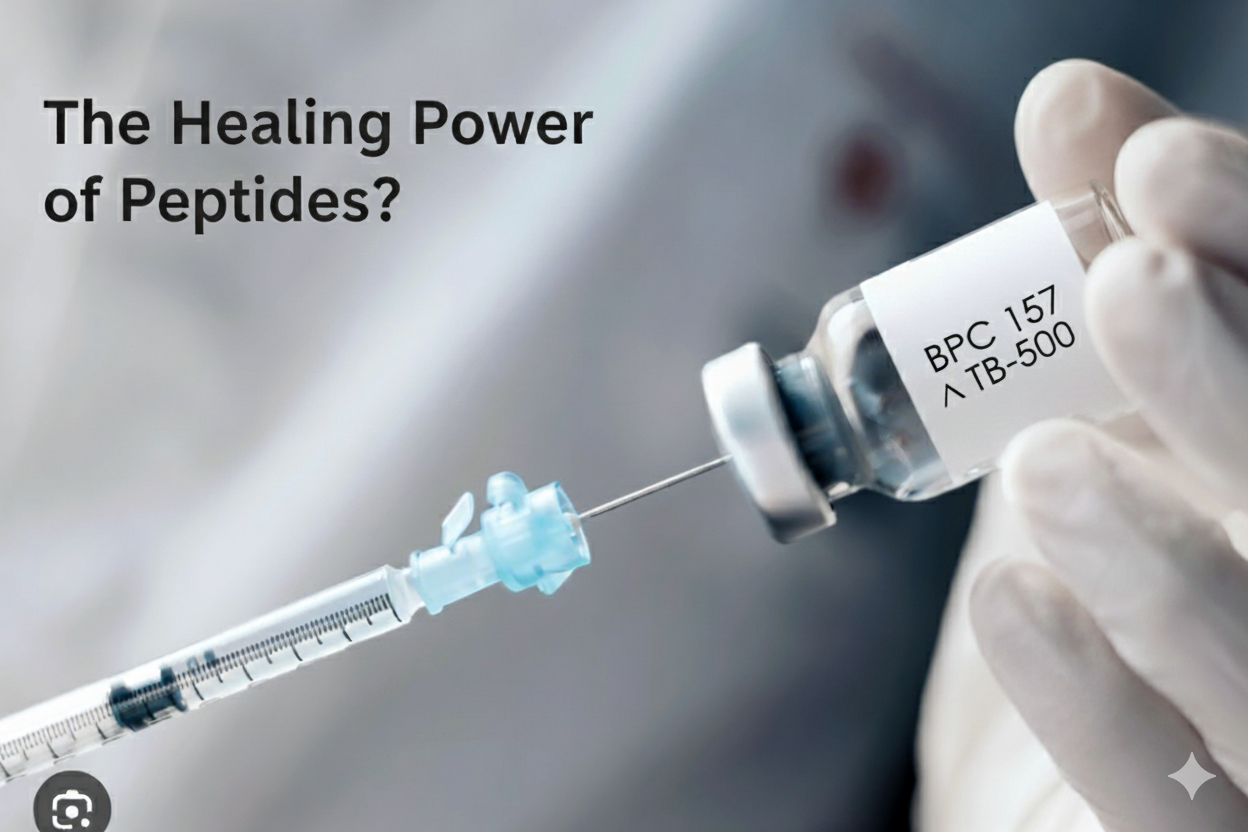Unfortunately, I am no stranger to ankle injuries. The worst injury of my life was a gnarly grade 3 sprain of my right ankle a number of years ago that took me out of commission for what felt like an eternity. So, this summer, when I rolled my ankle during a trail run in the middle of a marathon training block I wasn’t going to mess around. This time, I decided to throw the kitchen sink at it and see how fast I could get back to 100%. I immediately employed my old friends from my previous recovery journey: contrast baths, compression, ankle alphabet drills, and other basic protocols. But I was also interested in some pharmacological help. After being peptide-curious for years, I decided to put my body on the line and experiment with these compounds to see if they could help me get back to running more quickly.
What is a Peptide?
Before we go any further, let's clear up what peptides actually are as they have been making their way from fringe biohacker and athletic communities to the general population in recent years. In the simplest terms, peptides are short chains of amino acids, which are the fundamental building blocks of proteins. Think of them as mini-proteins.

While proteins are long, complex molecules made up of 50 or more amino acids, peptides are much shorter. This smaller size allows them to act as powerful signaling molecules in the body. They function like messengers, traveling through the bloodstream to instruct cells and molecules on what to do. Different peptides have different messages and some might tell your cells to reduce inflammation, others might signal the production of a certain hormone, and some, as you'll see, can instruct cells to begin the tissue repair process.
Are Peptides Safe?
This is the million-dollar question, and the answer is nuanced. Many of the peptides used in the biohacking community, including the ones I'm discussing, are classified as "research chemicals." This means they are not approved by the FDA for human use and have not gone through the rigorous, large-scale clinical trials required for prescription drugs.
Due to this, it's critical to approach them with a healthy dose of caution. The source of your peptides is paramount and sources you’ll find are made at compounding pharmacies that have different levels of quality and risk. If you are peptide curious, find a source you fully trust that has a Certificate of Analysis (COA) showing high purity and quality. The standard, and wisest, advice is to only explore these compounds under the direct supervision of a qualified medical professional and to not cheap out on the peptide sourcing.
I also must note a significant theoretical risk. Because these peptides work by promoting cell growth and angiogenesis (the formation of new blood vessels), there is a concern they could speed up the growth of existing, undiagnosed tumors by feeding them a new blood supply. The safest path, therefore, may be to do some full body imaging or doing any checks for possible cancer like PSA for a man and physical exams for men and women of high risk areas. Now, with that disclaimer out of the way... I did it solo. This was a personal decision based on my own risk tolerance and extensive research, but it's a path that requires you to be your own health advocate and should be taken very seriously.
Why BPC-157 + TB-500
For this recovery experiment, I chose a stack of two of the most well-known "healing" peptides: BPC-157 and TB-500. They are often used together for their synergistic effects and colloquially are known as the Wolverine stack.
BPC-157
BPC-157 stands for "Body Protection Compound 157"...great name, I know. It's a synthetic peptide that is a partial sequence of a protein found in human gastric juices. Sounds weird, I know, but the research is compelling. It’s believed to work primarily by promoting angiogenesis which is the formation of new blood vessels. More blood vessels mean more blood flow, which is critical for delivering nutrients and oxygen to an injured site to accelerate healing.
The research, though mostly conducted on animals, is quite promising. Studies have shown BPC-157 to have a significant healing effect on a variety of tissues, including tendons, ligaments, muscles, and bones. This makes it a compelling choice for a ligament injury like an ankle sprain, which notoriously heals slowly due to limited blood flow. BPC-157 has been used by many others for this type of injury with reportedly positive outcomes.
TB-500
TB-500 is the synthetic version of a naturally occurring peptide called Thymosin Beta-4 (Tβ4). This peptide is found in virtually all human and animal cells and plays a vital role in healing and repair. While BPC-157 is known for building new blood vessels, TB-500 is known for its ability to promote cell migration, upregulate actin (a protein critical for cell movement and structure), and reduce inflammation.
A quick clarification: The product I used was labeled Tβ4 (Thymosin Beta-4), which is the full-length, naturally occurring protein. TB-500 is technically just a small, synthetic fragment of that protein. The terminology is often used interchangeably, which is confusing. The most critical difference for this experiment is the half-life: the full-length Tβ4 I used is about ~2 hours (similar to BPC-157), while the TB-500 fragment is reported to last for days. This short half-life is why I chose a daily dosing strategy.
Essentially, Tβ4/TB-500 helps get the healing cells to the site of the injury and manage the inflammatory response. Research suggests that it has systemic effects, promoting healing throughout the body, not just at the injection site. For an acute injury like my sprained ankle, the goal was to leverage its anti-inflammatory and cell-mobilizing properties to speed up the initial, most painful phase of recovery. Again, TB-500 is one of the most widely used peptides alongside BPC-157, which made me feel it was lower risk than more experimental compounds.

Peptide Preparation - Learn from my mistake
When I received my peptides and was ready to get my ankle healing and get back to my marathon training I found myself completely unprepared. I didn't have the items to reconstitute my peptides, which came in a powder form. I quickly learned that you need to take this powdered peptide and make it into an aqueous solution for injection. At this moment I felt overwhelmed and underprepared for injecting my body with research chemicals but pushed through for science’s sake.
If you ever experiment with peptides you’ll need the following ready which I frantically ordered on amazon. I also found this video the best one for helping me walk through the reconstitution process.
- Bacteriostatic water (I used this one from Amazon)
- Syringes for reconstitution (I used larger 18 gauge syringes)
- Syringes for administration (I used 1ml insulin syringes)
- Alcohol wipes
- Dose calculator (I like this one best)
The Administration Process
After channeling my inner Walter White and getting my peptides reconstituted I started with tiny doses and built up to my full dose to ensure I didn’t have any adverse effects. I also started with BPC-157 solo before adding TB-500 to ensure I could have traceability on any new side effects.
Overall, the injections took a little bit to get used to, as I had never injected myself with anything. But after a couple of times, I had it down and was able to get my daily dose of peptides subcutaneously in a couple of minutes without much thought.
BPC-157 and TB-500 Dose
I dosed these very low at first to check for any adverse reactions and built up to taking up to 500 mcg of BPC-157 and TB-500 daily. I often broke up this dose into two parts, half in the morning and half in the late afternoon. I did this due to the short half-lives of these compounds and wanting to keep their concentrations up so they could have the best chance of helping me heal. My normal dose was on the lower end and the most typical dose I saw people using was ~500 mcg. I worked up to 500 mcg for a couple of days but most of my time was taking doses of ~300-350 mcg of each peptide daily. The progression of dose per day looked like the following and was just my own approach vs. something to emulate: 100,100, 200, 200, 250, 250, 250, 250, 300, 300, 350, 350, 350, 400, Off, Off, Off, Off, 350, 350, 500, 500, 500, 500, Off, Off, 500, 350 (all mcg).
This dose structure plus a few days off due to travel had this experiment lasting about one month.
Results
So for the big reveal – did this work and speed up my injury recovery?
The answer is………… I think so?
As someone trying to approach this scientifically I can’t definitively know how much faster or better my ankle healed as I had no control without the addition of peptides but subjectively will say that my ankle healed very quickly and I was back running a week later which felt impressive for the severity of this injury. At the two week mark I was getting close to pre-injury mileage and back on track for my marathon.
Many people talk about these peptides as miracle drugs that eliminate all pain once injected. I did not find this to be the case, but I do suspect my injury recovery time may have been reduced due to the added help of these compounds. I must also say I kept doing my full ankle sprain rehab protocol with contrast baths, PT work, and compression/elevation alongside the peptides. Mechanistically, I would assume that all the normal rehab stuff may be helped by peptides, but I would implore anyone to nail these proven basics before looking for extra help.
Once my ankle was 80% healed I still had two weeks worth of peptides and decided to keep going and use up my full dose to maximize the final healing of the ankle and also see how the peptides may help with other things.
As I continued taking BPC-157 and TB-500 I noticed the ability to handle more training volume and felt I was recovering faster than normal. I felt very good these two weeks and ramped up the volume and intensity of my training with less than expected fatigue and soreness. I may have been in a super compensation phase due to the rest from my ankle injury or perhaps the magical peptide cocktail was helping my body handle this volume.
I will never know for sure but with the absence of any negative side effects that I noticed would be open to ordering some peptides for future injuries to help with healing and get me back to training and the activities I love faster. These compounds as discussed have significant risks and depending on your health status and risk tolerance you may want to make a very different decision. As someone who does not handle injuries well I am more willing to take some risk if it means getting back to activity sooner but at this time really would like to see more rigorous research on these compounds for both efficacy and safety.
TLDR: Summary of benefits:
Pros:
- Rapid ankle injury healing
- Increased recovery from training
- Reduced muscle soreness
- Improved digestion (potential gut benefits?)
Cons:
- Daily injections are annoying
- Risks previous highlighted
- Cost
Summary - Would I use these peptides again?
Overall, my experience with the Wolverine Stack BPC-157 and TB-500 was very positive. My ankle healed as quickly as I ever could have hoped for, and I even feel like I was able to reap some of the benefits of these compounds as I resumed my training. I'll never know the exact role that these peptides played in my healing journey...but if I have a bad injury, I definitely think this is something in the toolkit that I would consider using again.
I hope you got something out of my experiment. If you have interest in using peptides for your own uses, please be smart about it, discuss this with your doctor, ensure a high-quality source, and be careful.
Thanks for reading,
Jake

